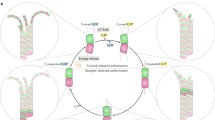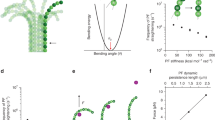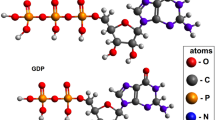Abstract
The structure of tubulin has recently been solved by electron crystallography of zinc-induced tubulin sheets. Because tubulin was studied in a polymerized state, the model contains information on the interactions between monomers that give rise to the αβ dimer as well as contacts between adjacent dimers that result in the structure of the protofilament. The model includes the binding site of taxol, an anti-cancer agent that acts by stabilizing microtubules. The present tubulin model gives the first structural framework for understanding microtubule polymerization and its regulation by nucleotides and anti-mitotic drugs at the molecular level.
Similar content being viewed by others
Author information
Authors and Affiliations
Additional information
Received: 15 December 1997 / Revised version: 25 January 1998 / Accepted: 2 February 1998
Rights and permissions
About this article
Cite this article
Downing, K., Nogales, E. New insights into microtubule structure and function from the atomic model of tubulin. Eur Biophys J 27, 431–436 (1998). https://doi.org/10.1007/s002490050153
Issue Date:
DOI: https://doi.org/10.1007/s002490050153




